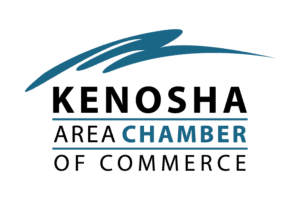Credit Risk Management
Every business is an exercise in managing risk. We all know that risk equals reward, but the goal is to shift that equation as much as possible. Risk mitigation has tremendous value, and when coupled with increased profitability, the risk/reward equation moves in your favor.
Contractors face more risk in business than most others. They have more moving parts, dependence on skilled employees, supply chain exposure, and are in a market that has had a history of boom and bust cycles. As you can see from those risks, contractors face both internal and external threats. Internal risks are managed while external risks are out of our control. However, lack of control doesn’t mean that external risks aren’t through preparedness and adaptation.
Risk can originate from both positive and negative sources. Whereas embezzlement is a negative source, growth is a positive source that brings tremendous risk. Risk management aims to identify possible risks a company might face, have a plan to deal with them, or make sure they are caught immediately and mitigate the threat as soon as identified.
Growth Risk
Specific to this article is growth risk. Something we would generally celebrate can also be the end of too many contractors. There is a tremendous amount of risk associated with growth, and it needs to be properly managed. Many contractors will be celebrating the explosion in sales while their books have red lights going off.
Here are some of the risks that growth can present.
Increased Job Costs
Rapid growth often increases the variable costs associated with each job. Those are primarily materials and labor.
Labor costs are increased either by paying more to lure employees away from others to accommodate your growth or by hiring less experienced employees that will cost you far more in time and mistakes. Sometimes, the desperate need for additional workers means spending more on less qualified people to have bodies at a job site.
Labor costs are also at risk of considerable growth in overtime pay if there aren’t enough employees to cover the influx of work. Every hour of overtime now costs you 50% more than an hour of regular time and can mean the difference between a very profitable job and a job that breaks even.
Materials costs rise when a desperate need for more job materials means the contractor turns to more expensive sources with material availability or substitutes in a lower quality brand of material that could have more problems down the road. You pay more to sources that have greater availability of materials because they are often larger companies paying to carry more inventory. Inventory flexibility during growth often comes at a cost.
Cash Flow Risk
It can feel great to see all of that money shown as accounts receivables on your company balance sheet, but that current asset can also be a business killer if getting those payments in is slower than your pace of growth.
Sales are increasing with your growth, but so are payments for materials, consumables, and labor. Even if revenue growth is in line with expenses, receivables need to be coming in as fast or faster. You’ve likely incurred increased job costs, and as growth continues, those costs might continue going up. What comes in during growth mode doesn’t include profit, as all funds are financing growth. You heard that correctly. Right now, you aren’t making money; you’re funding growth.
If a job goes awry or several customers are very slow-paying, it’s not like you’re taking some risks to net income. You’re lacking the money required to keep everything moving forward and at risk of not being able to pay suppliers or make payroll.
One-Time Cost Increases
Contractors depend on many expensive items necessary to complete their work. Tools, trucks, and space are the three that tend to be the most prevalent. Each requires capital. Even if trucks or land are leased, there is still a down payment for the trucks and possible improvements necessary for a new or additional site. These funds will most likely deplete reserve operating capital as all current cash flow might be funding growth.
Managing These Risks
These are just three risks growth can present. Many more risks impact operational efficiency, employee morale, and customer service. While not the picture we like to paint, it is possible to grow yourself out of business.
As mentioned previously, you probably aren’t making money in growth mode but funding the growth instead. A contractor needs a CFO with industry experience, like Daaxit, as a partner in making sure growth is planned, affordable, and profitable.
A fractional CFO with industry experience has played the growth game many times and will be performing job costing to ensure that the costs to complete each job stay in line. They will also review expenditures to find increases due to growth and anticipate one-time costs and their impact on operating reserves. Most importantly, your CFO will show you where growth is at a healthy level that can be self-funded through cash flow while still maintaining profitability and where you enter a danger zone.
It’s never fun to tell contractors that not all growth is good, but it is always great to see them managing the risks that growth can present with the help of a fractional CFO and planning on ongoing prosperity. A fractional CFO with industry experience gives them the numbers worthy of real celebration; longevity and money in the bank.









